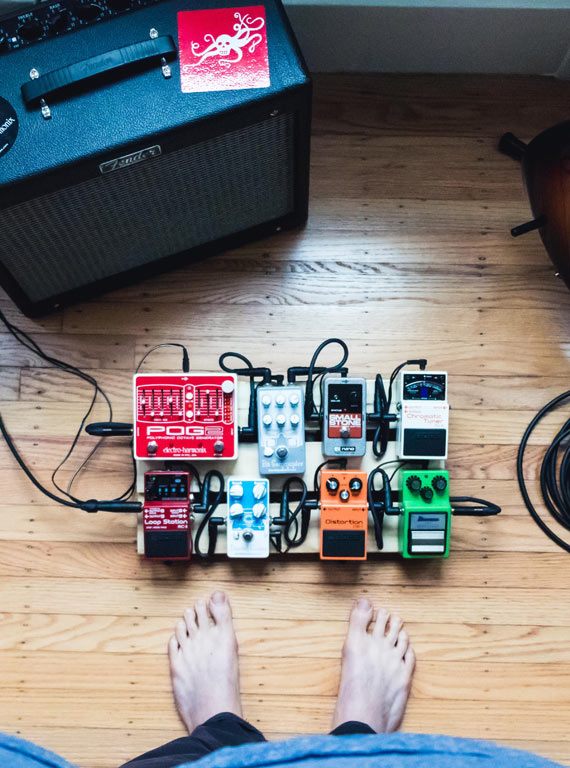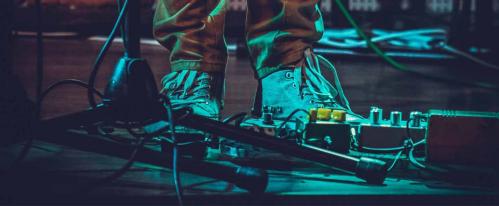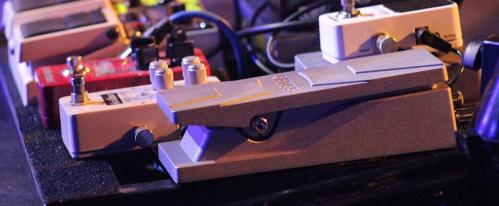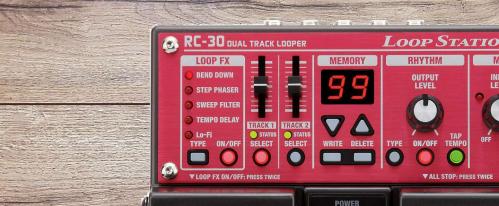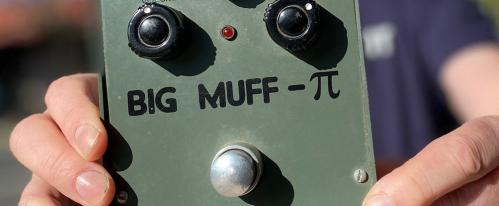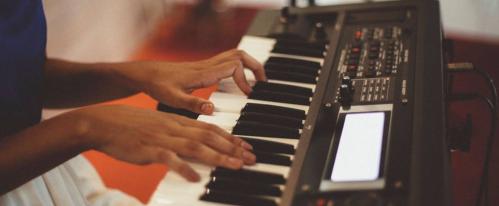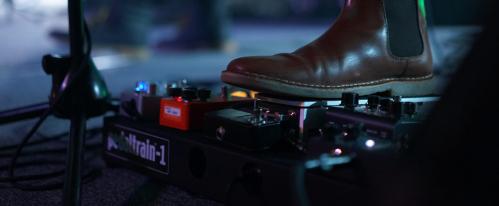WE PROVIDE A COMPLETE BEGINNER'S GUIDE TO GUITAR EFFECTS PEDALS AND LIST THE MOST ESSENTIAL GUITAR EFFECTS PEDALS FOR YOUR BOARD!
If you’re new to the world of guitar effects pedals, it can be a little daunting. You might be asking yourself “which guitar effects pedals do I need?” - or maybe you’ve bought your son or daughter a new guitar and need to know what guitar pedals to go with it.
Perhaps you’ve decided to really get serious when it comes to changing your sound up, and you need to know where to start - figuring out what guitar effects pedals do and what sounds different guitar pedals make. Either way, we’re here to help with our handy guide to guitar effects pedals, complete with sound examples.
There are numerous types of guitar pedals, so we’ll go through each type of guitar pedal - from distortions to delays and everything in between - and keep it super simple. We’ll leave out some of the more technical details as this is just a beginner's guide to guitar effects pedals - but if you feel you’re ready for a complete guide on putting together a pedal board, then we have a more in-depth blog for you to read here.
Guitar pedals for beginners are still professional bits of kit, and the pedals featured here are industry-standard machines that you anyone can get to grips with.
Without further ado, let’s get stuck into the most widely-used electric guitar pedals and answer the question: "What pedals should every guitarist have?"!
First of all we'll take a look at the best guitar pedals for beginners and introduce our favourite guitar pedal brand for new guitarists..
Big Top FX

Whether you're a new starter or hunting for the best guitar pedals on a budget, we always recommend Big Top FX at PMT.
This diverse selection of circus-themed stompboxes give you studio-quality tones with a simple interface that makes it easier than ever to dial in the best sounds.
Featuring classic effects units such as Fuzz, Distortion, Boost, Flanger and more, you can also practice with the Ringmaster Looper and keep everything running with a Big Top Power Supply.
Distortion Pedals
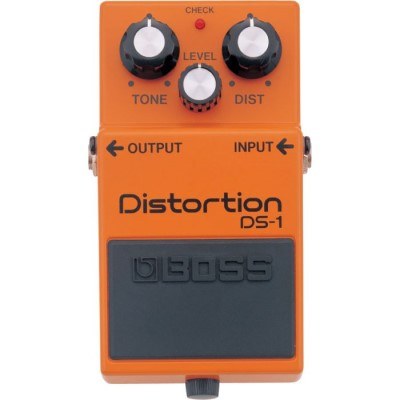
First up we have the most widely used and most useful pedal ever created – the Distortion pedal!
If you’re wondering “what is a distortion pedal?” - the clue is in the name. It basically takes your signal (from the guitar) and distorts it, adding volume, crunch and sustain to your sound. This effect is often used in the chorus of some of your favourite songs for a contrasting sound to the natural guitar tone.
A distortion pedal can often be confused for a fuzz or overdrive pedal, but the trained ear can definitely hear the difference. We won’t go too in-depth here, but if you want to know the difference between the three you can read more about it in our dedicated blog here.
A distortion pedal will change the sound of your guitar and respond differently depending on which guitar you use.
Below, Dagan shows us one of the most famous distortion pedals ever, and demonstrates how it makes our guitar sound more aggressive.
Reverb Pedals
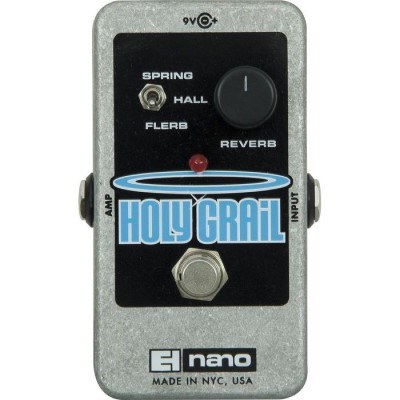
If you’ve already got an amplifier, chances are that it’s got built-in reverb effects - so you might not necessarily need a pedal.
However, some amps don’t give you the option of turning it off at will via a foot pedal. A reverb pedal basically gives an echo effect and gives your guitar more weight. Think of the sound you hear when you walk into a church or cave – a big expansive sound that reverberates off the walls.
If you want to completely oversaturate your sound with reverb to sound like you’re in a massive cave, you can turn the reverb up all the way and engage it when the song calls for it. We actually covered some of the best reverb pedals in our best reverb pedals blog, so check that out for a list of great options.
We’d recommend the Electro Harmonix Holy Grail Nano, or the BOSS RV-6 reverb – both industry standard reverb pedals.
View all Reverb Pedals.
Here's a few of our favourites below:
Wah Pedals
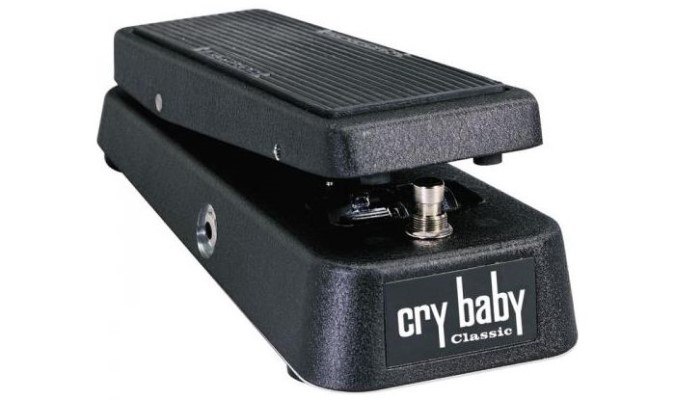
Wah pedals make exactly the noise they’re named after – a “Wah” noise! If you say to yourself “Wah, Wah, Wah” slowly, that’s the same sound the pedal makes.
Imagine a baby crying in slow motion and you kind of get the idea. The Wah sound was probably best captured on “Foxy Lady” by Jimi Hendrix and is widely used in funk and rock solos thanks to its really cool sounding effect.
The most famous Wah pedals are the Jim Dunlop Crybaby Wah pedals - however the new Electro Harmonix Wailer Wah is also an amazing option too.
Overdrive Pedals
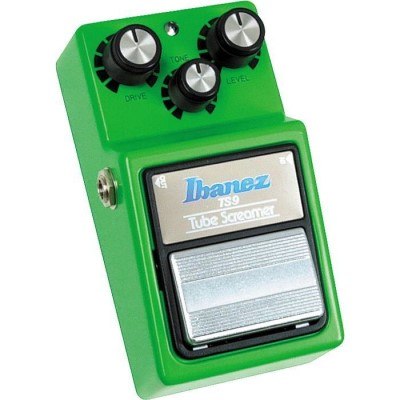
Overdrive pedals are very different to distortion pedals - and without getting too technical - they push your guitar signal harder, rather than changing the sound completely like a distortion pedal does.
An overdrive pedal retains a lot of the original sound of your guitar, but drives the amplifier to give it a heavier, thicker signal.
They’re ideally used with valve/tube amps, as they push the tubes to their limit and allow them to bring out the more natural distortion that these amps are renowned for.
We wrote about the best tube amps for home use here, but if you wanted some great practice amps, we also wrote about them here too!
One of the best overdrive pedals ever made is the Ibanez TS9 Tube Screamer, closely followed by the BOSS OD-1X or BOSS SD-1. Check out our video below to hear the BOSS pedals in action:
Delay Pedals
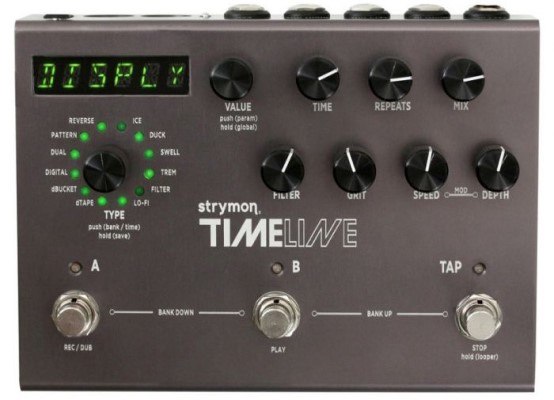
Delay pedals take your original signal - a guitar chord or note for example - then plays it back exactly how the pedal heard it the first time. It can either play the note back once or multiple times, depending on your settings. This is usually referred to as “feedback time”.
Often, you’ll see Digital Delay pedals as well as Analogue Delay pedals.
The major difference is that digital delay pedals will offer longer delays and a ‘cleaner’ exact sound, but some guitarists prefer analogue effects for the subtle nuances and unpredictability in tone.
This comes down to personal preference, but both options sound great. Some industry standard delay pedals are the Electro Harmonix Memory Boy Delay Guitar Effects Pedal, BOSS DD-3 Digital Delay, the Strymon Timeline Delay and the MXR M169 Carbon Copy Analog Delay Guitar Pedal.
Fuzz Pedals
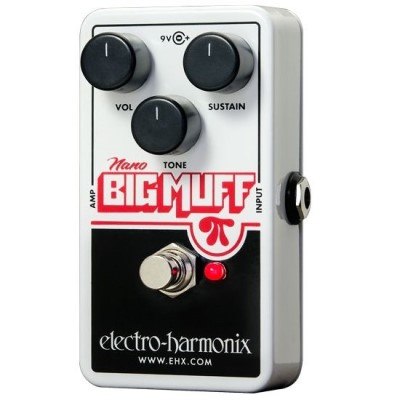
Fuzz pedals provide guitarists, bass players, and even keyboard players with a hefty amount of distortion that sounds VERY different to regular distortion sounds.
Fuzz pedals make your guitar sound like its pushing your amplifier to the point of blowing up. A fuzz pedal completely changes the sound of your guitar signal into a heavy, fizzy, and extremely noisy sound that, depending on which pedal you choose, can provide a bass heavy noise or a spitting ‘broken’ amp sound.
Think Velcro being ripped apart and you’re somewhere pretty close.
There’s a great selection of fuzz pedals out there to choose from, but some of the most popular options are the Electro Harmonix Big Muff Pi, the BOSS FZ-5 and the Dunlop FFM3 Jimi Hendrix Fuzz Face Mini Effects Pedal. Check out our Top 5 Best Fuzz Pedals Blog for some great sound samples.
Boost Pedals
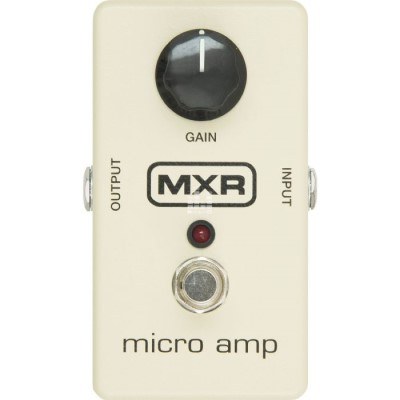
Boost pedals increase the strength of the signal going in to your amplifier. This means you don’t have to use distortion to get an increased volume when you want to make the chorus or lead line jump out.
A boost pedal increases the signal without adding distortion, and can be used to fatten up your sound, ‘pushing’ your amplifier harder and louder - just without the grit that a distortion pedal will add.
One of the most widely known and widely respected boost pedals is the MXR Micro Amp, as is the Orange Two Stroke Boost EQ Pedal and the Blackstar LT Boost Pedal.
Chorus Pedals
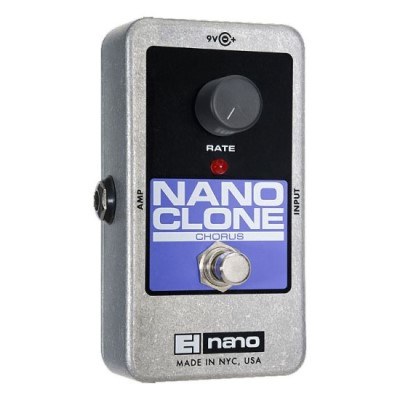
Chorus pedals actually make your guitar sound like there are a variety of different guitarists playing the same thing that you are playing, but with a different guitar and slightly out of time with you.
This effect makes everything you play sound a little bit ‘warbly’ and thickens up your guitar or bass lines. We recommend experimenting with these as you can use them subtly to add weight to your sound or as a full-blown effect that completely takes over your signal.
The most famous chorus pedal would have to be the Electro Harmonix Small Clone, as it appeared on Nirvana's song 'Come As You Are' and many other famous tracks.
The Boss CH1 Super Chorus Guitar Effects Pedal is also a widely used option.
Phaser Pedals
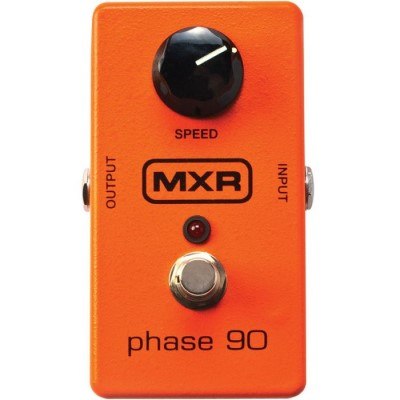
A phaser pedal is similar to a chorus as it thickens up your sound but also adds a sweeping effect – almost as if the speaker within the amplifier is spinning around or moving up and down.
If you pretend the speaker is moving away from you and moving closer and back again – you’ll get an idea as to how it sounds. You can change the length of the effect and the speed of the movement via the pedal controls.
The MXR Phase 90 is one of the most widely used phase pedals, made famous by Van Halen, Smashing Pumpkins and more.
Flanger Pedals
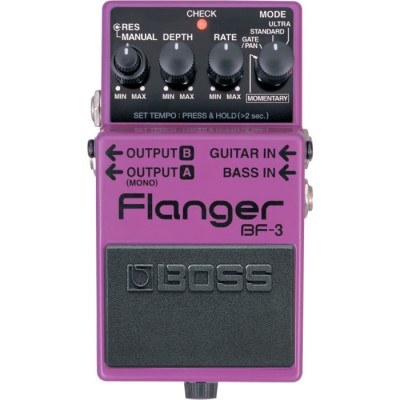
A flanger is similar to a phaser pedal but makes more of a whooshing effect. This effect is much more noticeable than a chorus.
The BOSS BF3 Flanger Pedal is one of our favourites.
EQ Pedals
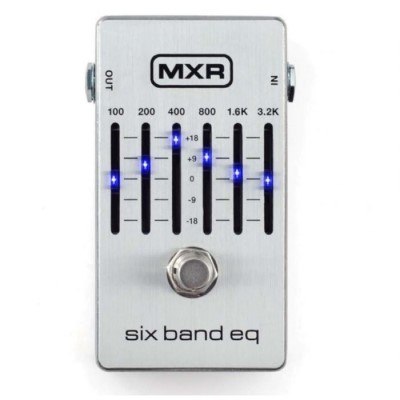
An EQ pedal has been designed to allow you to tune certain parameters of your sound such as the bass, middle and treble frequencies. They are predominantly used by more experienced guitarists who want to add or take away specific bands of sound.
These are great for guitarists who want to really boost the treble, bring out the bass or just ensure their guitar signal sounds as flat as possible.
The MXR M109S Six band EQ Pedal is one of our favourites.
Looper Pedals
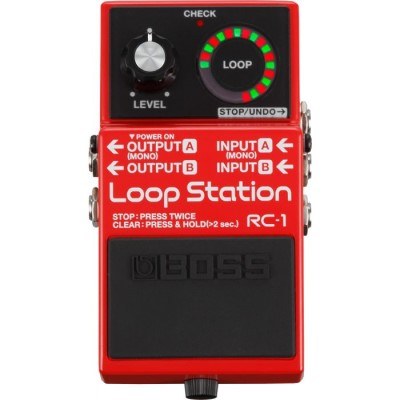
If you’re new to the world of guitar or bass, a looper pedal is a great way to hone your skills.
A looper pedal is not an effect, but more a tool that allows you to record chord progressions, notes or riffs, and then play them back through your amp. It’s ideal for playing a chord progression or rhythm section, looping it and then playing a lead line or riff over the top – like two guitars playing together.
It essentially records for you when you hit the pedal and then plays it back when you hit it again. Each time you stand on the pedal it allows you to lay another track down.
Looper pedals are great for live-use and home-use when you need to make it sound like there’s more than one guitarist.
Some of our favourite loop pedals are the BOSS RC-1 and the Electro Harmonix Nano 360 Looper Guitar Pedal.
COMPRESSOR PEDALS
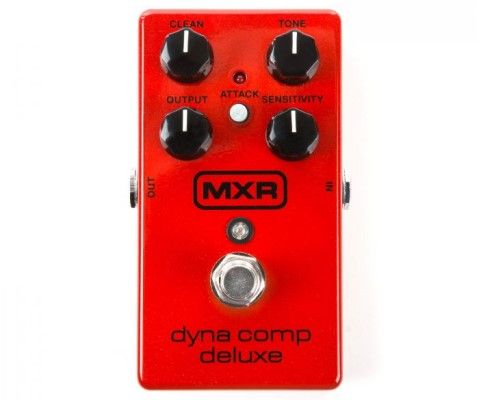
A compressor pedal is another type of pedal that you could class as more of a tool than an effect. It essentially takes all the dynamics out of your playing and ensures every note you play is the same volume.
When you engage this pedal, regardless of how hard you play the string, it will sound the same in terms of volume. These are favoured by bass players as they ensure each note can be heard correctly, but they are also used by guitarists who like to solo as they add sustain to your playing.
One of our favourites is the MXR M102 Dyna Comp, as well as the Deluxe Version.
Tremolo Pedals
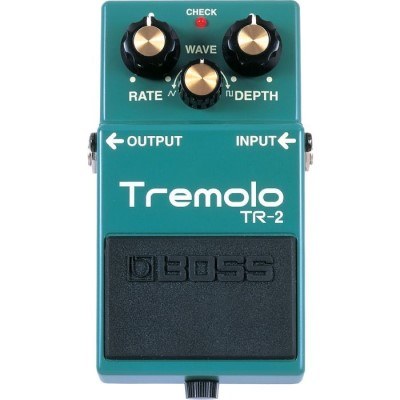
A tremolo pedal takes your signal and chops it up, making it sound like the volume is dropping and reappearing very quickly. Imagine what it would sound like whilst holding a note and turning the volume down on your amp and back up again quickly and repetitively and you’ll get the idea.
A tremolo allows you to change the speed at which the volume drops happen and how severe the cut off is. You can have it set to completely cut your sound out or just gate it, which allows a certain amount of sound through at each interval.
The BOSS TR2 Tremolo is one of our favourites here at PMT, as is the Fender MTG Tube Tremolo.
Tuner Pedals
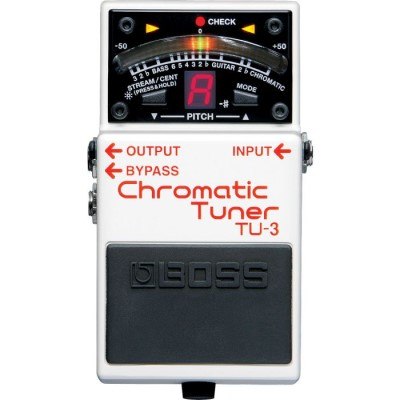
A Tuner Pedal is an absolutely essential purchase for guitarists of all levels.
It provides you with a quick and convenient way to tune your guitar during a live set or at home. They also cut your signal when they’re engaged, so no-one has to listen to you tuning up!
A guitar tuner pedal is an absolute must have if you’re serious about guitar as it provides accurate tuning instantly, and can even allow you to tune your guitar to alternative tunings such as Drop D, as well as open tunings and more.
Check out our Top 12 Best Guitar Tuners Blog for more info on Guitar Tuners.
The absolute industry standard is the BOSS TU-3 Tuner Pedal - a must-have.
Volume Pedals
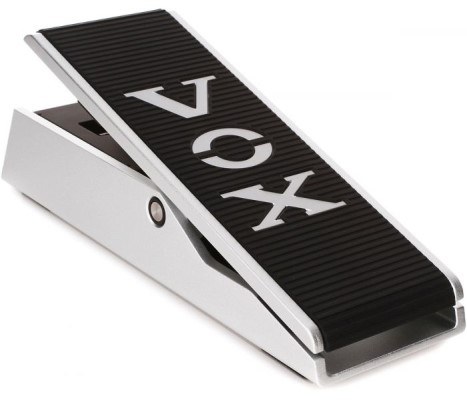
A Volume Pedal is ideal for those guitarists out there who like to use volume swells or fade-ins - particularly for those who don’t want to have to use the volume pot on their guitar to do so!
All you do is apply pressure on the front or back of the pedal to get the desired effect and you’re good to go! They’re super simple to use and only change the signal rather than the tone of your guitar or bass.
Noise Gate Pedals
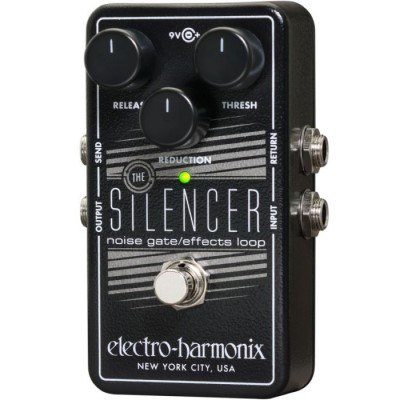
f you’re using a bunch of hi-gain pedals, or a lot of pedals chained together, chances are you’ll get a little bit of hum or unwanted buzzing coming from your amp.
If your amp is buzzing when you’re not playing anything, you might benefit from a noise gate pedal as they cut out all that unwanted noise whilst preserving your tone. A noise gate pedal completely cuts off your signal when you’re not playing anything and prevents noise from getting through to your amplifier until your start playing again.
The Electro-Harmonix Silencer Noise Gate / Effects Loop Pedal is a great way to get rid of that pesky hum or buzz affecting your signal.
Octave Pedals
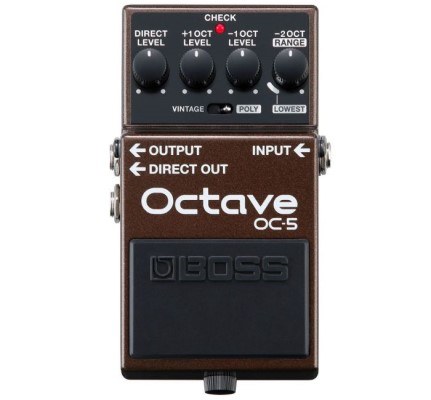
An Octave Pedal listens to what note you’re playing and adds the next octave up or down (depending on your settings) to your tone. This makes it sound like someone is playing the octave note with you.
If you’re familiar with guitar or just learning, you’ll know that an octave is the distance between one musical note and its corresponding note at a higher or lower pitch.
For example, if you play an open E string and then play the E string on the 12th fret, it will sound the same, just an octave higher. You can set an octave to play the higher or lower notes or both at the same time. This is ideal for those who want to really thicken up their sound, and they are often used by heavy metal guitarists to make solos and riffs sound really cool!
The Boss OC-5 Octave Pedal is a great choice, and the Electro Harmonix Nano Pog is an industry-standard option.
Acoustic Simulator Pedals
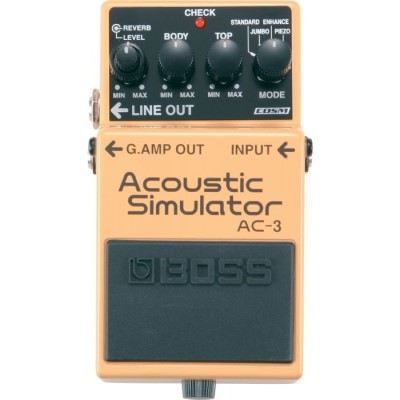
If you love the sound of both acoustic and electric guitars then an Acoustic Simulator pedal is ideal.
These pedals take your guitar signal – regardless of what electric guitar you’re playing - and make it sound like it’s an acoustic.
These are often used by guitarists on stage who want to switch between an acoustic and electric guitar sound during a set or even the same song.
The BOSS AC-3 Acoustic Simulator is a great option!
Essential Effects Pedals
No beginners guide to guitar effects pedals would be complete without a list of recommended pedals!
We’ve covered almost all of the guitar pedal types available, but if we had to pick our favourite pedals (or the essential guitar effects we think you’ll really need) it would be the following pedals:
1. TUNER PEDAL
Although it won’t improve your playing or change your sound, you need a tuner pedal on your board to ensure your guitar or bass is always in tune. There’s nothing worse than hearing a guitar out of tune, so make sure you’re always tuned up before you plug in!
Here's our 3 favourite options:
2. DISTORTION PEDAL
A Distortion pedal is a must - it really helps bring out those chords, solos and riffs and makes sure they stand out. It gives you the volume jump when you need it and changes the overall sound of your guitar, giving it power and aggression. Of course, you don’t always have to dial in the pedal for bone crushing riffs, as a distortion pedal can provide a smoother sound - but at least the option is there!
3. DELAY PEDAL
Delay pedals add so much more weight to your sound and gives your guitar a doubling effect, which is really useful to make it sound like there’s two guitars on stage. They’re also great for creating psychedelic sounds and experimenting with riffs. Again, you don’t have to dial in big delay effects and can use the pedal subtly to add resonance.
- Electro Harmonix Canyon Delay and Looper Pedal
- Fender Mirror Image Delay Pedal
- Boss DD-3T Digital Delay
4. LOOPER PEDAL
- Digitech Trio+ Band Creator and Looper
- Boss RC-1 Loop Station Pedal
- Electro Harmonix Nano 360 Looper Guitar Pedal
If you’re just starting out in the world of electric guitar, a looper pedal is a great way to learn how to play in time and play with other musicians. As you can jam along with yourself, lay down a rhythm track and play lead over the top, you get to learn what works best. It’s also a great song writing tool as you can jam with yourself and create some killer tracks. You may not use it live but you’ll definitely use it!
PERFECT GUITAR PEDAL ORDER
Setting up your board? The perfect and recommended guitar pedal order is as follows:
Guitar/Bass - Tuner - Wah - Pitch Shifters/Octave/Compressors - Overdrive/Distortion/Fuzz - EQ - Modulation/Phase/Chorus/Flanger - Delay - Reverb - Loop Pedals - Amplifier
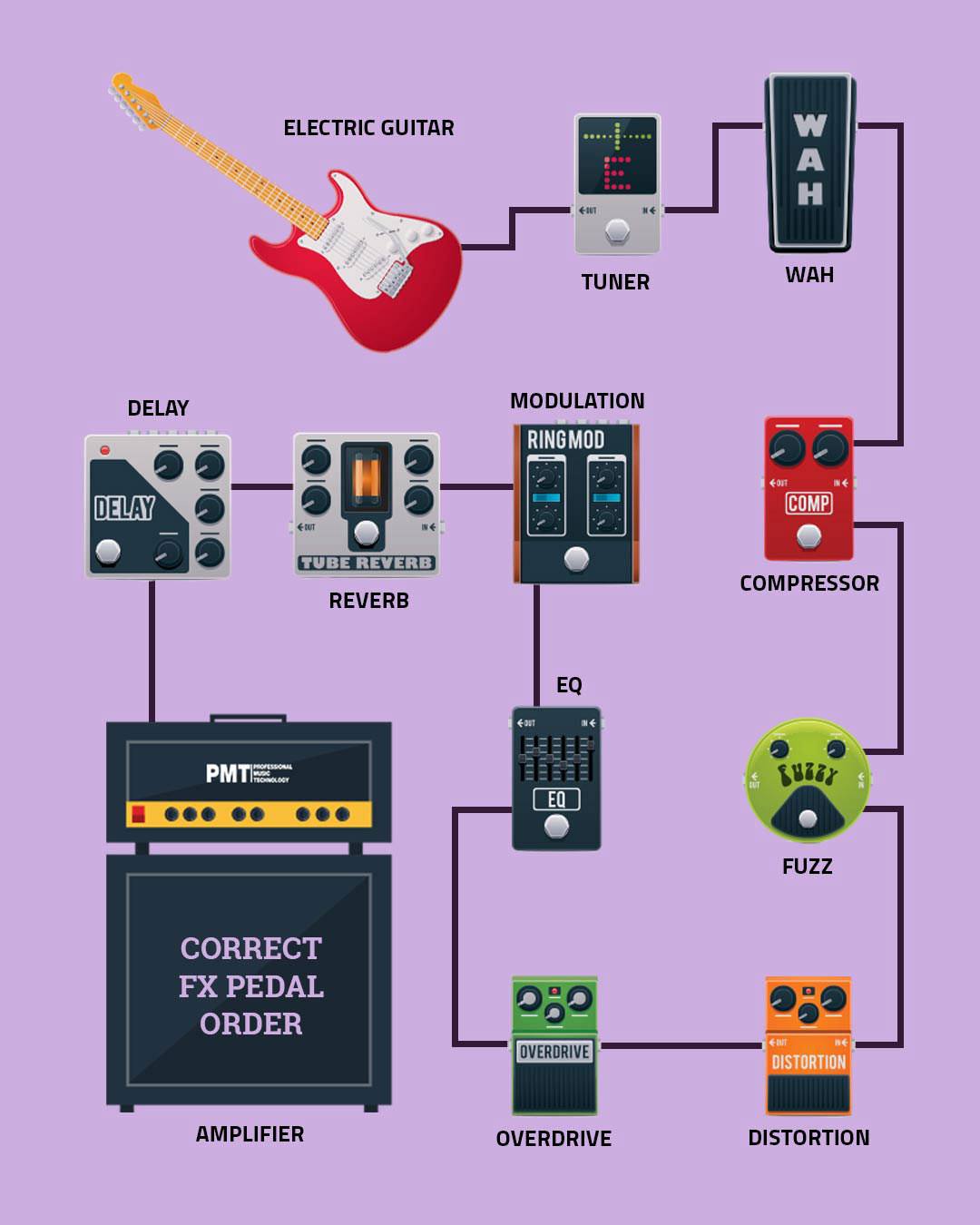
WANT TO KNOW MORE ABOUT GUITAR EFFECTS PEDALS?
Watch our video below:
If you want to learn more about guitar effects pedals, or need to know how to put a pedal board together complete with all the accessories, power supplies and patch cables to create a full live and recording rig, check out our How to Put a Pedal Board Together Guide. We hope you've enjoyed our beginners guide to guitar effects pedals, but if you need more information check out a full selection of guitar effects pedals over at PMT Online or call in to your local PMT Store to speak to any of our Experts about getting the best guitar effects pedals to suit your needs.

